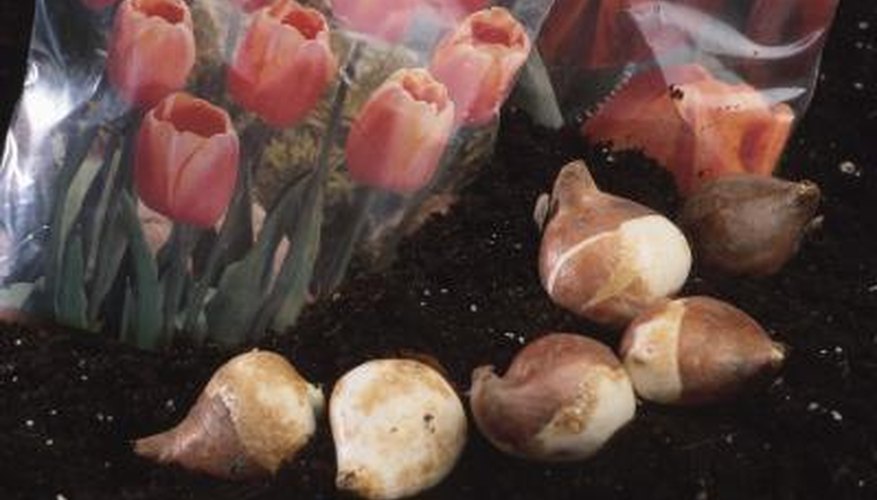A spring perennial, tulips bloom in hundreds of colours and combination of colours. People have grown tulips for over 400 years. The bulbs need a period of cold weather to regenerate and grow. As the tulip bulb grows, it forms small bulblets. These tiny bulbs grow into a mature tulip bulb within a few years. Once the new bulb matures, it grows the same type of flower as the parent bulb. Tulip seeds are not dependable to develop a tulip true to the parent.
- A spring perennial, tulips bloom in hundreds of colours and combination of colours.
- Once the new bulb matures, it grows the same type of flower as the parent bulb.
Dig up the tulip bulbs once the leaves have died back. Use care when digging to keep damage to a minimum. Remove the bulbs that have developed bublets. Remove the leaves from the tulip bulbs.
Shake off the soil from the roots of the tulip bulbs. Wash the bulbs to remove any remaining soil. Dry the bulbs with paper towels. Set the bulbs on a drying screen for two to three days to let the bulbs dry.
- Dig up the tulip bulbs once the leaves have died back.
- Shake off the soil from the roots of the tulip bulbs.
Pull the bulblets from the parent bulb gently to avoid damage to the tulip bulb or the offsets. Use a sharp knife to separate the bulblets, if necessary.
Coat the new bulbs and exposed sections of the old bulbs with sulphur powder. The sulphur keeps the bulbs from rotting.
Plant the bulbs in the garden during the fall. The new bulbs may take two or more years to mature enough to flower.
TIP
You will know it is time to propagate the tulips when flowering decreases or even ceases. Another sign is a decrease in flower size.
